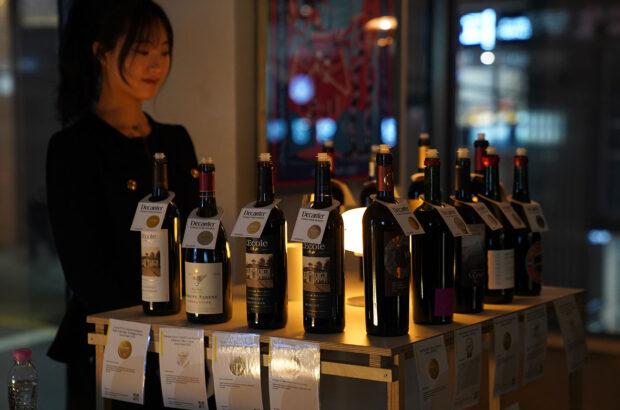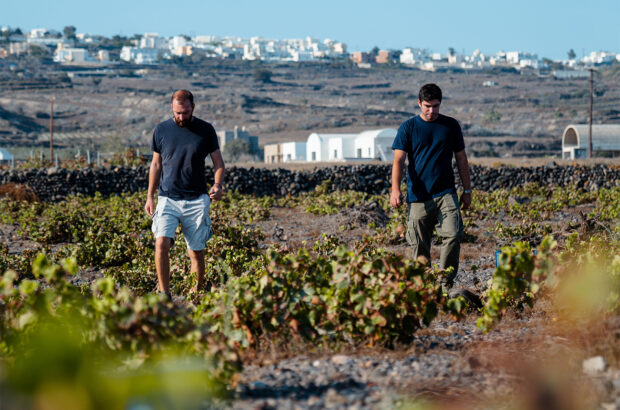Whatever doubt existed earlier this year about whether US President Donald Trump would act on his campaign promises about aggressive deportations has disappeared in recent weeks.
A series of US Immigration and Customs Enforcement (ICE) raids in Los Angeles sent shockwaves through California’s immigrant communities, putting thousands of the state’s residents, undocumented and even those with proper documentation, on high alert.
A palpable, tense, and uneasy stillness hangs over those in Latino communities. Among them are farmworkers across the state, including many in vineyards, who are now grappling with fear, uncertainty, and the very real risk that showing up to work could lead to arrest and deportation. In many cases, families are left without information, as ICE often does not disclose where individuals are taken, leaving loved ones to navigate the anguish of not knowing if or when their family members will return.
With wine’s growing season now in full swing, vineyard crews are busy with necessary springtime fieldwork – canopy management, shoot thinning, and ‘suckering’.
As the season intensifies and crews spend more time around the vines from now through harvest, the threat of immigration enforcement acts increases significantly, adding a layer of stress to an already demanding craft in an industry under strain and historically dependent on highly skilled and experienced immigrant labour.
California is well-known as the country’s largest wine-producing region, contributing approximately 80% of American wine production and employing hundreds of thousands of workers across its vineyards and wineries.
While industry-specific figures are limited, Farmworker Justice estimates that around 70% of all US farmworkers are immigrants, and of those, approximately 45% lack legal documentation.
‘Harvest is the highest level of visibility and would be the most “newsworthy” time to conduct these aggressive and unconstitutional actions, but the whole situation is so unpredictable that it is scary to make assumptions,’ said Sam Coturri, proprietor of Sixteen 600 winery in Sonoma County, when asked about when raids could start to happen.

Vineyard workers during a night harvest in Napa Valley. Credit: Justin Sullivan / Getty Images
Preparing for the worst
Most growers and producers have been preparing for such raids for a while now.
‘The truth is, we’ve been talking about this since the election,’ said Coturri. ‘We have held a series of immigration trainings with our vineyard senior management and incorporated the topic into crew safety meetings. We’ve walked through examples of both legitimate and illegitimate warrants – ICE has been known to show up with paperwork that looks official, but if it’s not signed by a judge from a court, it’s not valid.’
At one winery, which farms vineyards in multiple Sonoma County appellations and agreed to speak off-the-record, the production team has been working closely with legal advisors to implement proactive strategies aimed at protecting its workforce. One key measure has been clearly marking vineyard boundaries and indicating that these are private business spaces – an important step, as ICE agents are not legally permitted to enter private property without a warrant.
‘We encourage all our grower partners to do the same,’ said the director of winemaking. They noted that creating detailed property maps felt unnecessary in the past, but now it serves a clear purpose. ‘The assumption has always been that this is private land, and generally, no one should be coming onto it without permission,’ they added. ‘But we need to be clear and intentional about everything we do now.’
The safety of vineyard workers has become a central concern for the winery.
‘We want to create a safe place for our employees. We don’t want anyone to feel they can get arrested on our site,’ they said. ‘People are at risk, so that is our first priority right now: making sure that they have a safe work environment, then we can focus next on making good wines.’
The same sense of urgency is felt at Sixteen 600, where precautionary measures have become part of the daily routine. The team now makes a point to secure all vineyard gates once they’re inside to prevent unexpected visitors.
‘We do our best to lock all our vineyard gates behind us when we go in, just to make sure no one can show up unannounced,’ said Coturri. Communication has also become more coordinated. ‘We maintain a constant line of communication in our work group chat – any suspected sightings are shared immediately so we can verify or debunk them quickly. It’s about helping people stay informed and as protected as possible.’
The human costs
But the concerns extend beyond immediate worker safety. The loss of vineyard crews to immigration raids during the growing season, especially as harvest approaches, could have a serious and difficult-to-measure impact on wine production. For Coturri, the stakes are both economic and deeply personal.
While acknowledging that labour disruptions could present a significant risk to his business, he emphasises that the individuals affected are more than just workers.
‘These are people that are an integral part of my community,’ he said. ‘Obviously, it would be dire. It’s already a fairly difficult economy for wine and grapes, especially for small producers. Anything that adds costs or increases pressure is going to be detrimental.’
Still, Coturri admits that economics isn’t always at the front of his mind. ‘Honestly, I try not to think about the business side of it as much,’ he said. ‘Because the people being targeted by this – they’re our friends, they’re our neighbours. These are people I grew up with.’
‘The worst part is the uncertainty these days,’ said one winemaking industry veteran working in California, who spoke to Decanter on the condition of anonymity.
They have lived in the United States for over two decades and are a recipient of Deferred Action for Childhood Arrivals (DACA). This programme offers temporary protection from deportation to immigrants who grew up in the US and allows them to live and work legally in the country.
Currently awaiting the renewal of their DACA card, which is required every two years, they fear the worst but still hope for the best. ‘I have children who were born here, so I don’t want to leave them behind. I also have never done anything wrong. I have a clean record, so I want to think that my card will arrive,’ they said.
Another North Coast wine professional Decanter spoke with has been living undocumented in the US for over 20 years, when they arrived at the age of 11. They were never able to apply for DACA. ‘When I tried to submit my application, that’s when the government closed the programme,’ they said, referring to the Trump administration’s decision to end the programme in September 2017.
Although the Supreme Court later blocked the termination in 2020, DACA remains in place only for existing recipients, and new applications are still not being processed.
‘We do have a lot of resources from our employers and NGOs, but at the end of the day, we still wake up with a lot of fear of not knowing when or where you might be encountering an agent, you know?’ they shared, describing the anxiety that lingers despite support systems.
Since the recent aggressive raids in Los Angeles, protests have erupted across the state and the country, calling for immigrant rights and the protection of human dignity.
There were reports of ICE sightings in California wine country on 10 and 11 June that have circulated on social media but have been hard to substantiate.
On 12 June, Trump announced in a press conference that he would issue an order to address the effects of his policy regarding ICE enforcement in the agricultural, hotel and hospitality industries. Internal ICE communications about policy changes have not been made available to the public, nor is it clear that the reversal will extend to vineyards.
Yet, what lies ahead for immigrants, their families, livelihoods, and their futures remains painfully uncertain, and so does the impact on the wine industry.







